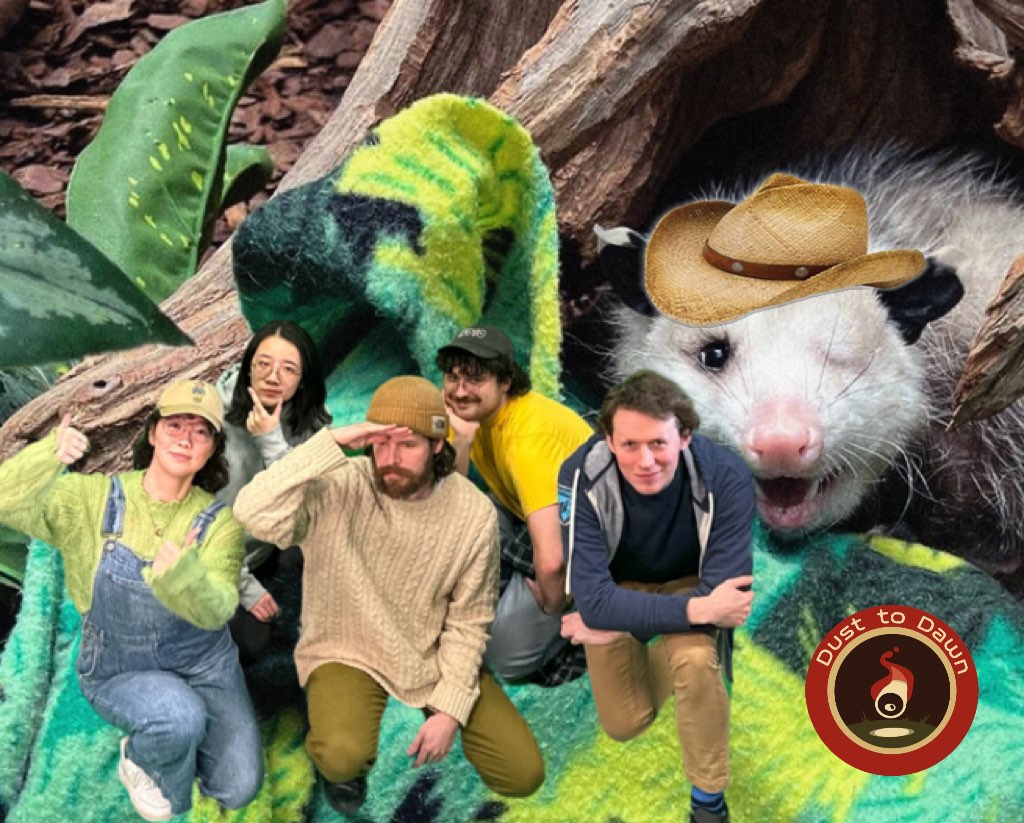Hello! We are team Dust to Dawn, a team of 5 graduate students at the Entertainment Technology Center of Carnegie Mellon University trying to make an amazing pixel art action adventure game. We are glad you’re here 🙂
Our team:
Annie Feng – Producer, Designer
Derek Williams – Artist, Designer
Lutong He – Artist, Narrative Designer
Collin Rehmeyer – Systems Programmer
Ezra Hill – Tool Programmer, Technical Artist
Dust to Dawn is an indie action RPG with a unique aesthetic revolving around light and darkness. Its lighting system, implementing 3D dynamic lighting with 2D-pixel assets, impacts the gameplay foundation and also world thematics.
In the game, the player acts as the leader of a caravan of nomads facing an encroaching darkness in an abandoned giant’s house. They will use our unique lighting tech as a powerful tool to explore, defeat enemies, and illuminate the darkest corners of the once-opulent house.
Work Preparation:
Following a successful pitch, we now have the chance to dive into turning our vision into reality!
Over the winter break, we kicked off our pre-production phase with a series of brainstorming sessions on design and narrative. Now, as we enter the spring semester, our focus has shifted to exploring new design options, setting up tech and fixing existing bugs, and finalizing our artistic direction.
Design Discussion:
During our design brainstorming session, our main focus was on integrating light and shadow into our game mechanics rather than treating them solely as decorative elements. We aim to make them integral to gameplay. Consequently, several ideas emerged.
Firstly, we considered making light a limited resource. The fire spirit, Hum, would illuminate the surrounding environment, but over time, the light would dim and eventually extinguish if the resource is depleted. This concept of light as a finite resource opens up opportunities for designing more intricate level layouts with environmental interactions and shortcuts. This encourages players to explore the world, manage resources efficiently, and discover shortcuts to navigate the map more effectively.
Secondly, we explored incorporating light and shadow elements into combat. Rather than having the player fight enemies solely with a sword, we brainstormed the idea of granting Hum the ability to launch ranged attacks, possibly in the form of light or fire spells. Additionally, we considered the potential for Hum’s light to either attract or repel enemies.
Art Bible and Some Concept Art:
The project’s beginning week kicked off with an intensive brainstorming session between two artists on the team, Lutong and Derek. The focus was on defining the direction of art, encompassing considerations such as the time era, design language, and the overarching worldview. Building upon the established game demo, the central theme of the game depicts a post-apocalyptic world characterized by a unique architectural blend of Victorian, Gothic, and Edwardian eras. To provide a clearer roadmap for the creation of concept art and assets within the Unity scene, the artists delved into the Art Bible. This Art Bible outlined the correct pixel sizes for the protagonist, side characters, and scene props. Derek crafted a set of color palettes for the environment and props, ensuring a cohesive and consistent visual aesthetic across the various environmental scenes.
Lutong, who is responsible for environmental assets, initiated the process with a sketch outlining the macroscopic architectural structure of the mansion. She generated some preliminary ideas for the exterior scene, which may be implemented on the starting page of the game.
Progress Report:
- Set up Unity and Perforce for version control
- Adapted existing project to be easier to expand on later
- Brainstormed design ideas around light and shadow
- Developed art bible for a united art style
- Put together art reference on Pureref
- Sketched some house exterior environment concept art
- Started to work on some furniture assets
- Set up production tools like Trello and GDrive
Plan for next week:
- Prototype the Hum attack combat system
- Player melee attack
- Prototype the enemy AI and combat behaviors
- Prototype the light being limited resources
- 1 piece of furniture to put in the library room
- Prepare for the quarters presentation
- Drafts on posters and half sheet
- Team Logo
Challenge:
- Need to explore the design possibilities and get feedback from playtesters, need to figure out where we are heading soon after quarters
- Need to figure out our scope and what our deliverable goal is
- Need to think about creative ways to implement light and shadow into mechanics
- Build pipelines for artists to import art pieces into the engine
